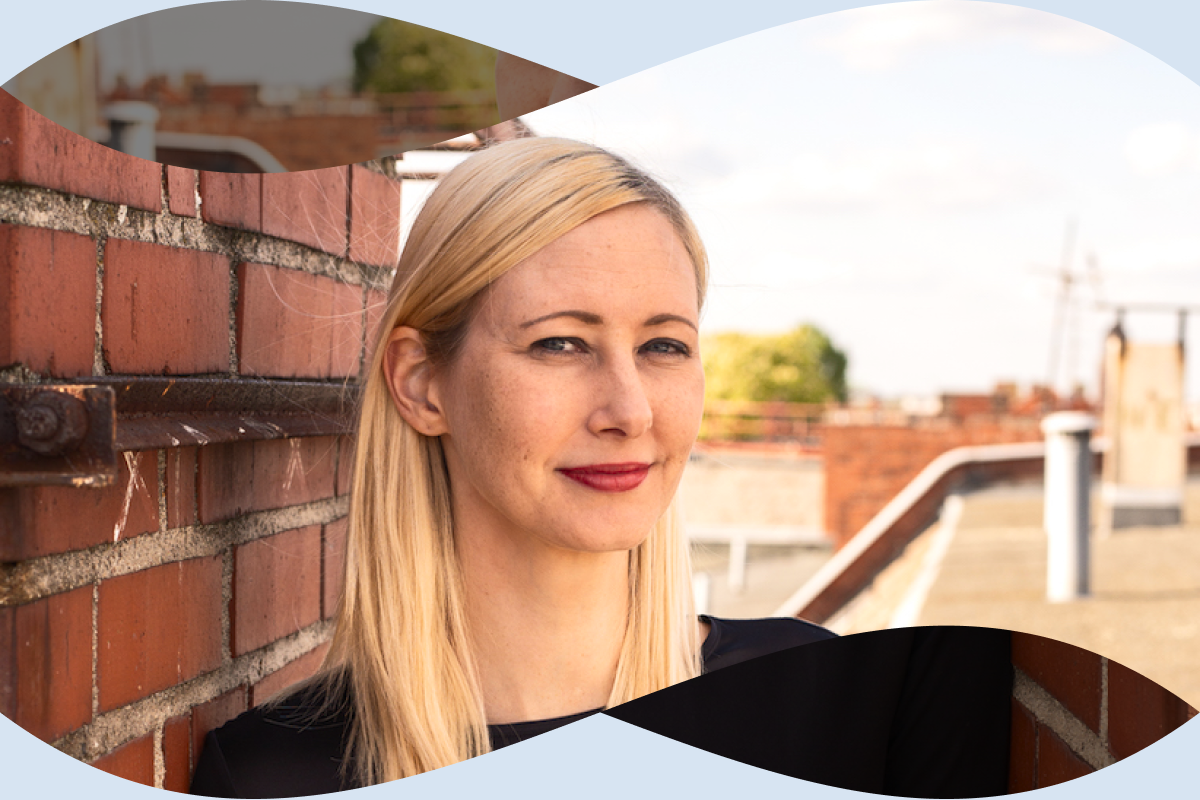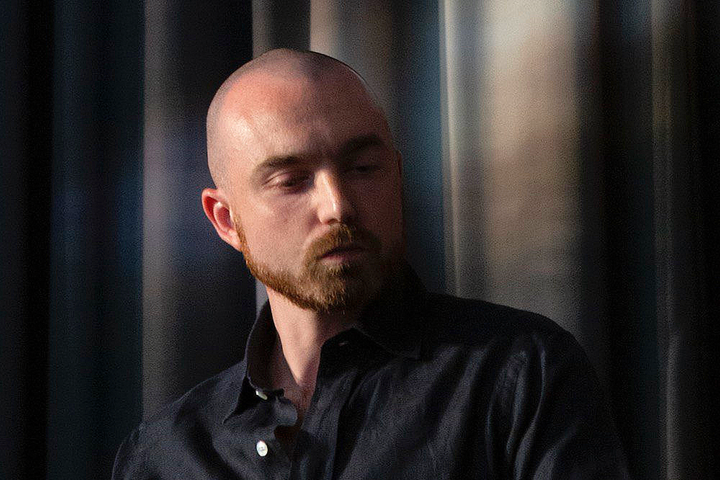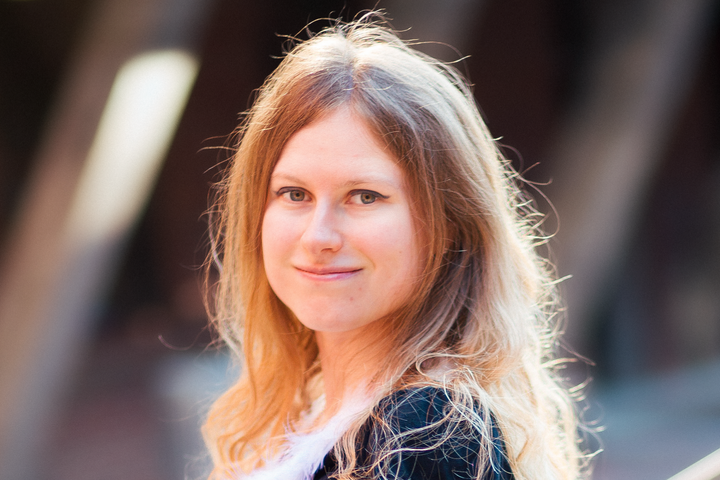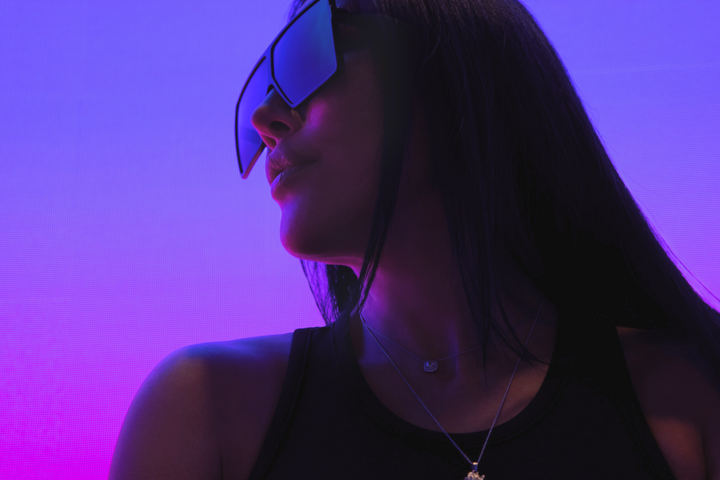Tina Sauerlaender, Curator in the Physical, Online, and Virtual Spaces

About the Rise of Art in Virtual Spaces, Headsets, Radiance, and No Limits
On hybrid curation between physical, online, and virtual spaces
There are mainly two different ways to access an exhibition in a virtual space: with your browser or with a VR headset. Of course, the latter is the best option, because it is the only way to really understand the space and its dimensions. Free and easy-to-use tools for creating virtual spaces, especially Mozilla Hubs, highly influenced the art scene in recent years. The artist Martina Menegon for instance, created several VR artworks with the WebXR tool, such as her painterly-like composition, on the other hand (2020).
With our curatorial collective and international exhibition platform peer to space, we have been curating several shows on Mozilla Hubs in the past years. As a curator in the physical, online, and virtual spaces, I highly appreciate the differences of each realm and the possibilities they offer for curating. I choose the setting of an exhibition depending on the audience, the number of works I want to include, the media I would like to show, and so on.
Virtually expanding your horizons, no gravity
Approaching virtual exhibitions as a curator, you first must think about your audience. Is your audience new to virtual exhibitions? Do they know how to navigate virtual spaces? Do they like digital art or rather traditional media? For the ONE TO ONE exhibition series, initiated by PRISKA PASQUER Gallery, we have been recreating the physical space of the gallery but placing it on a Caribbean-like island. In this way, the gallery’s audience, who have mostly been new to virtual exhibitions, moved between something they were already familiar with, which eased their access to the virtual space, and new surroundings encountered for the first time.
In another exhibition, Mermaids & Unicorns (2017), which was exclusively online, we showed works by a total of 56 artists, reaching a global audience with 24/7 access to the show. Installing such a comprehensive exhibition in a physical space would have been unaffordable. Other exhibitions in virtual spaces such as Light Shines Through The Curtains Of Time, a solo show by Ornella Fieres at PRISKA PASQUER Virtual Gallery in 2021, are also interesting because you can add dimensions to the works without being tied to physical constraints like gravity. You can install a large screen projection floating above the beach against the sunset in no time.
We have also been including paintings and drawings, but presented them in ways that only become possible in the digital realm. In the virtual exhibition Portrait Of A Future – Charlie Stein, curated by my colleague Peggy Schoenegge from peer to space at PRISKA PASQUER Virtual Gallery in 2021, Stein’s paintings—portraits of humanized AI robots—were turned into sculptures; and her drawings, gently laying in the waves, were embraced by water. As the audience of peer to space familiarized themselves with digital art for over a decade, we created our own Virtual Art Space (architecture by Mohsen Hazrati, 2021). It allows us to exceed physical limitations and the known ways to build spaces as far as possible. For example, visitors must fly to get to the artworks, which are arranged at different heights.
On the emergence of Virtual Reality exhibitions, do the esthetics and references relate to entertainment, gaming, and cinema, or is this a bias?
Curating digital art in a physical space, particularly Virtual Reality experiences, requires a great deal of knowledge for installing the technological parts, and a comprehensive visitor support. It is a new approach, which is very different from looking at a painting in a museum. Visitors are immersed in a 360-degree setting that requires an active role, moving around and/or interacting via controllers. But just because people interact with controllers in a virtual world doesn't automatically make the VR experience a game. Visual artists don't create levels, coins to collect, bosses or zombies to shoot. Instead, they show us their critically reflected view of the world. They deal with the influence of new technologies, speak about marginalized groups, war, injustice. Naturally, as in all other artistic media, every topic is applicable. However, for many people, it seems difficult to understand the distinction between different genres such as film, games, entertainment, and art when it comes to VR. One reason for that is because a VR headset can be used for all of these experiences. Here, art is no longer made of materials that are far removed from everyday life, such as marble or oil paint, but art has found its way into people's homes with a tool, the VR headset, which they could use every day for many different experiences.
Get a headset and start experiencing
To start with Virtual Reality, it helps if you already know how to use a smartphone. If you put on a consumer headset like the Meta Quest, you will encounter a computer-like surface, an app store, a place for your apps, your profile, and settings. If you have already been playing with gaming consoles and controllers, the navigation will be a bit easier, but anyhow it is very intuitive and you will learn quickly. As how to perceive a virtual world in a VR set can neither be told nor shown enough, I strongly recommend everyone to get a headset and start experiencing.
When we started Radiance VR in 2017, VR in visual arts was a “new” thing (using “marks” because VR art exists since the 1980s) and was constantly confused with gaming, only because you also use controllers to navigate. But controllers are just one way of interacting. Radiance, as a research platform for VR art, connects the artists who produce the works with museum curators or festival directors who search suitable works for their exhibitions. Our online platform now presents and documents nearly 200 experiences from 180 artists from 40 countries. And we have built the Radiance VR App for Meta Quest headsets that enables you to watch many different artistic VR experiences with your headset at home. It enables art to leave traditional museum spaces or gallery white cubes to reach everyone’s living room.
What is your positioning on NFTs?
As a teacher and lecturer for digital art history and as a curator for digital art for more than a decade, today’s NFT websites with JPGs and GIFs jumbled together from different genres, where the main context is the price and not the content, I have a very hard time appreciating the value of NFT platforms. Furthermore, a digital file can be copied endlessly, originals don’t really exist in the digital realm. So why impose the traditional physical art market system on the digital one? Why also incurring (high) energy costs just to artificially generate value? Shouldn't we rather consider how late capitalist systems can finally be put to rest with the help of the digital? I see the opposite happening. Structures keep repeating instead of changing. However, I appreciate that Digital Art arrived in the mainstream and that some digital artists finally earn money with this new form of art sales. And I can see how blockchain technology itself can be useful for many digital structures beyond NFTs.
Tina Sauerlaender is an art historian, curator, speaker and writer. She focuses on the impact of the digital and the internet on individual environments and society, as well as on virtual reality in visual arts. She is Artistic Director of the VR ART PRIZE by DKB in Cooperation with CAA Berlin. With her independent exhibition platform peer to space she has been curating and organizing international group shows since 2010, e.g. The Unframed World. Virtual Reality as Artistic Medium for the 21st Century at House of Electronic Arts Basel in 2017. She is co-founder of Radiance VR, an international online art platform for virtual reality experiences. She is the founder of SALOON, an international art network for women. She is a PhD Candidate at The University of Art and Design Linz (Austria) and a lecturer for Digital Art History at the University of Applied Sciences in Bielefeld (Germany). She give talks on Virtual Reality and Art e.g. at re:publica (Berlin), ZKM (Karlsruhe), or New Inc (New York).



